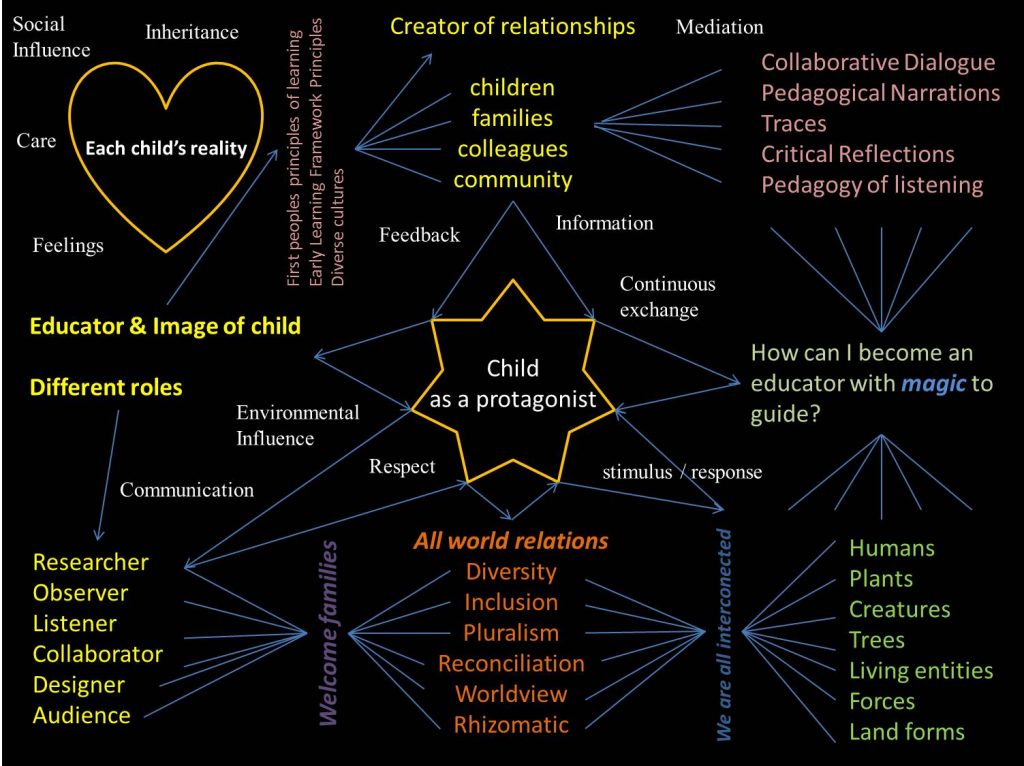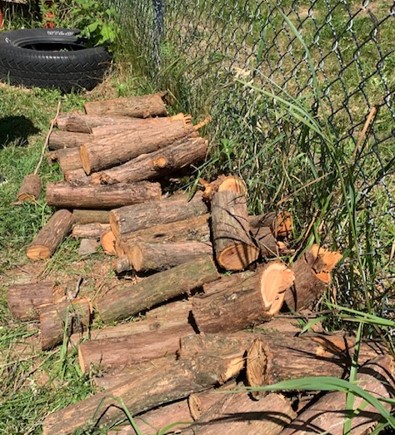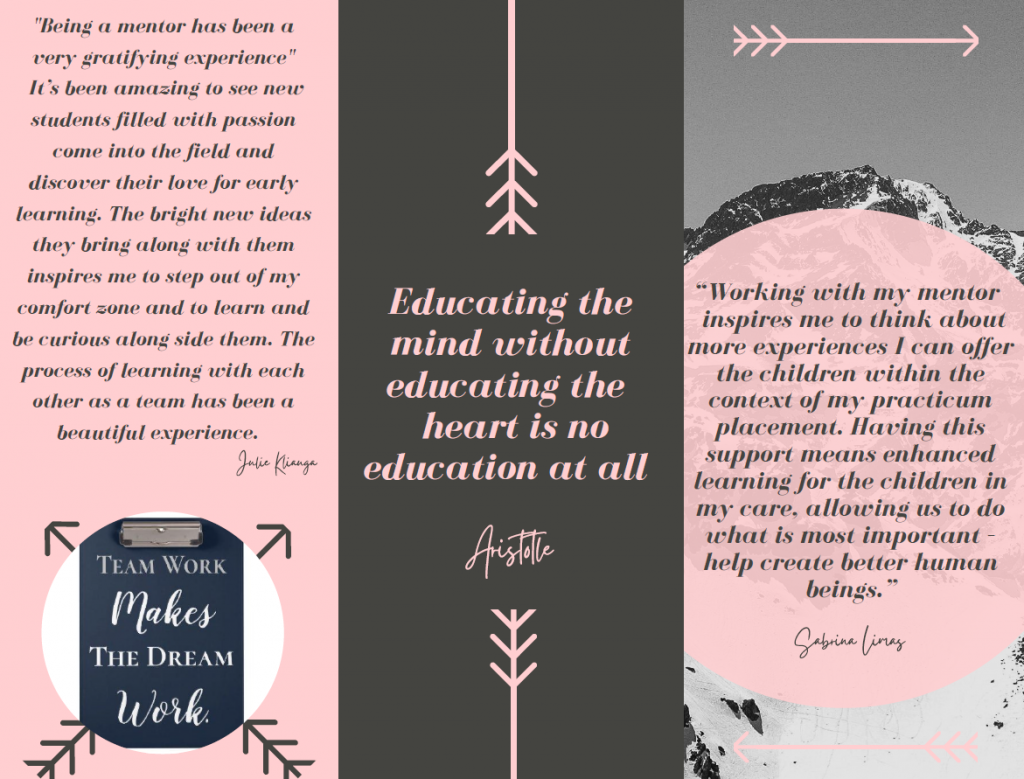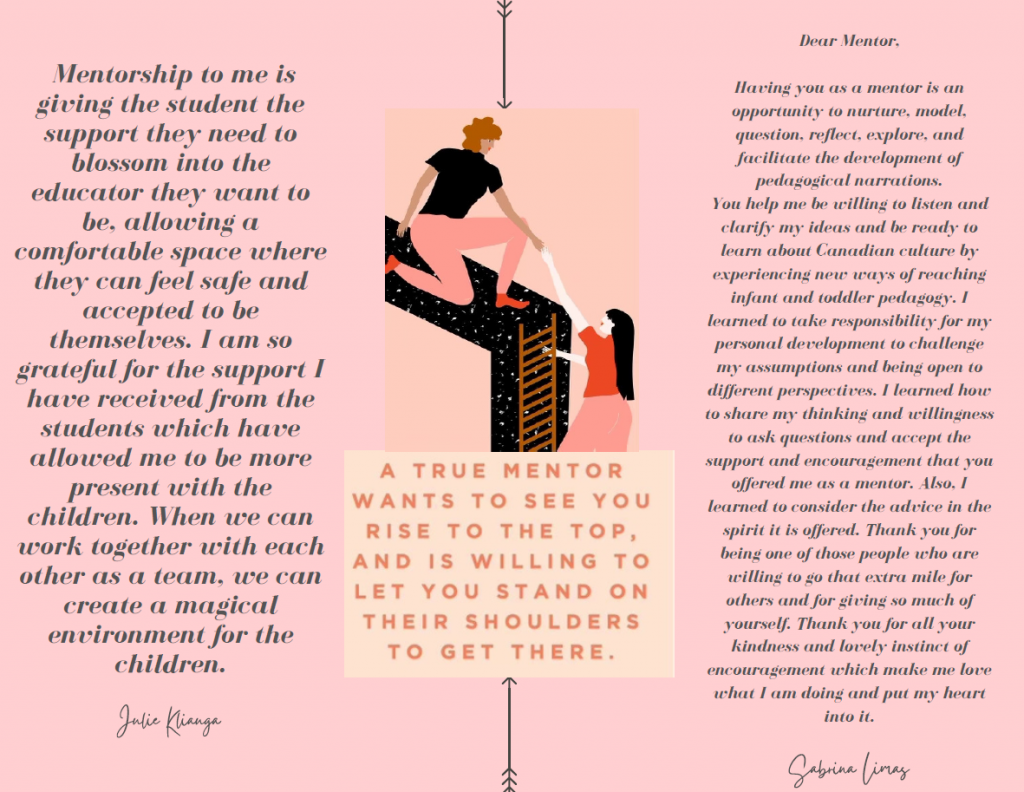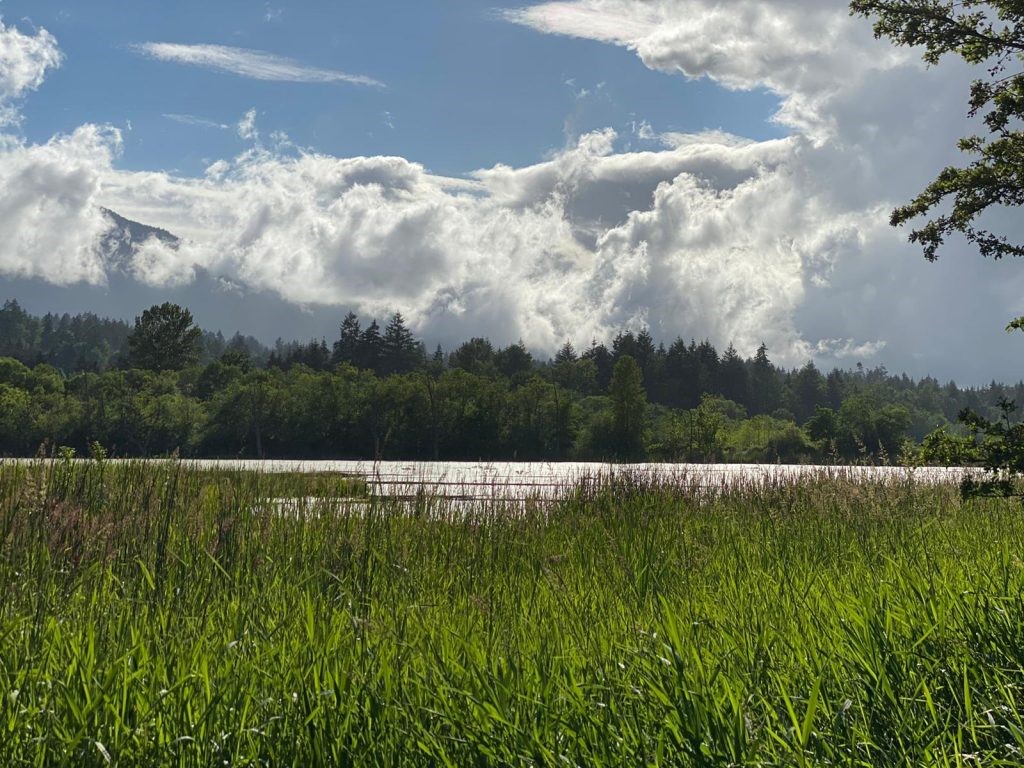By Kozue Rathe
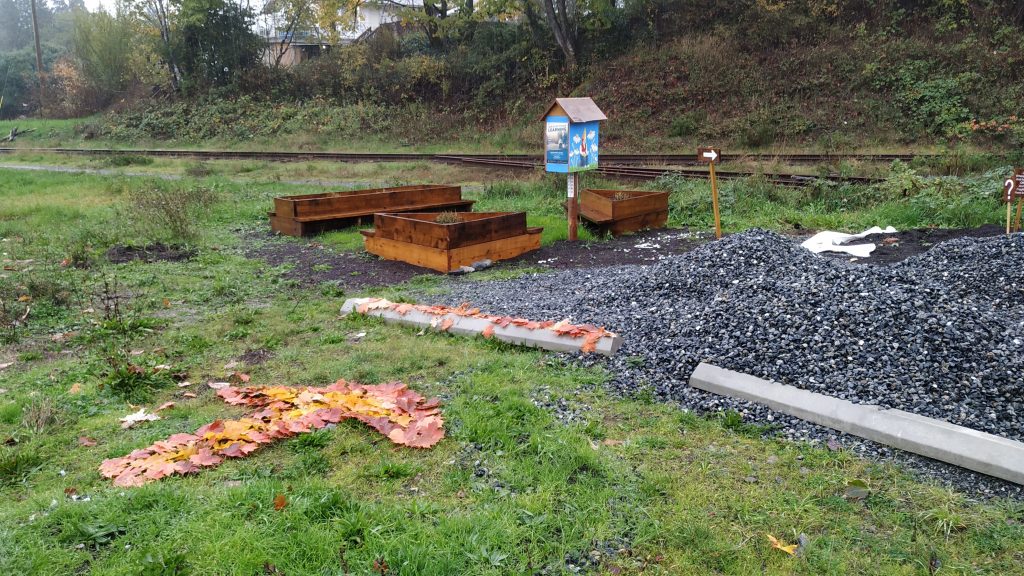
On a rainy Saturday morning my colleagues and I gathered at our children’s centre for an event called “strengthening our learning community through art as inquiry”. We started the day with the visit to the rock art exhibition in the neighboring parking lot. Our artist in residence, Michael, invited us to pick a stone to bring back as we were going back inside. I picked a small white stone with many black dots on it. I chose it for its small size and for the one shiny black spot that I noticed after I picked it up. As we got inside, I kept an eye on the stone while I tried to find a comfortable seating position. Michael who was leading the experience told us to lay down or get comfortable, then close our eyes in preparation for our imaginary tour around our neighborhood.
I sat with my eyes closed listening to the voice of Michael. The little stone was in my hands. The imaginary walk started at our children’s centre and took us in three directions: to a cliff, a nearby park, and a large rock. We were encouraged to feel the stone and talk to it at times. Whenever we paused for a moment, I asked the stone if it wanted to keep going. The answer was always “Yes” as it was a young stone with many pointy edges. I, on the other hand, am old (not that old) and smooth from going over the bumps of life. Throughout this imaginary tour, the rock stayed in my hand. I sometimes moved it around in my hands feeling the bumpy surface of it, or sometimes it just rested on my hand. By the time I opened my eyes as the imaginary tour came to an end, I had formed a relationship with the stone. It even looked like it had two dotted eyes and a small pointy nose.
While I was going through the tour, I thought of the children who were in my infant and toddler class. They come through the gate to our yard with one or more stones in their small hands tightly gripped almost every morning. There is also a child who comes with a piece of gummy which he never eats. While infants and toddlers often like to have things such as stones, toys, nuts, bugs, flowers, and food in their hands, they do not like to let them go. Although a piece of gummy from the breakfast could be too dirty to be eaten after one hour of outside play, it is still difficult for the child to let it go. I never thought of the fact the tight grip on a cereal, gummy or a rock was a sign of the relationship. The child has formed a relationship with the object in its hand and it makes it hard to open the hand to part with it. It could be because the cereal came from home where the child longs to go back, or the child feels the connection with his family or parents who he loves. A stone at the parking lot might have caught the child’s eye with a noticeable shine. Also, the roughness of the stone may give just the right amount of sensory stimulation on the soft palm.
In any case, any object can form a relationship with a child if a grownup who has not visited any imaginary world for a long time can have a relationship with a stone.
The experience with the stone gave me the opportunity to vision the world of imaginary play of children as well as the relationship between objects and children.
As I wrote this, my 6-year-old son wanted me to read the story I was working on. I read him the first two paragraphs, and he asked me if it was a true story. I said,” yes.” Then he wanted to see the stone I was writing about, because he wanted to see the spots that was shiny. He did not question about the fact that I was talking to the stone or the relationship between the stone and I. I felt as though I was allowed in a special place where it was filled with children and only chosen adults.

